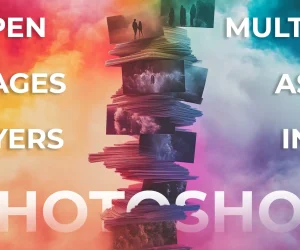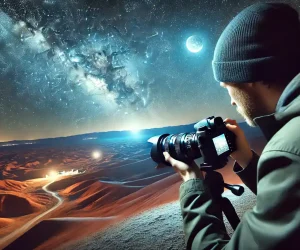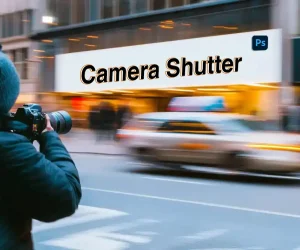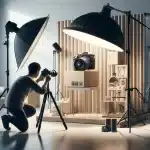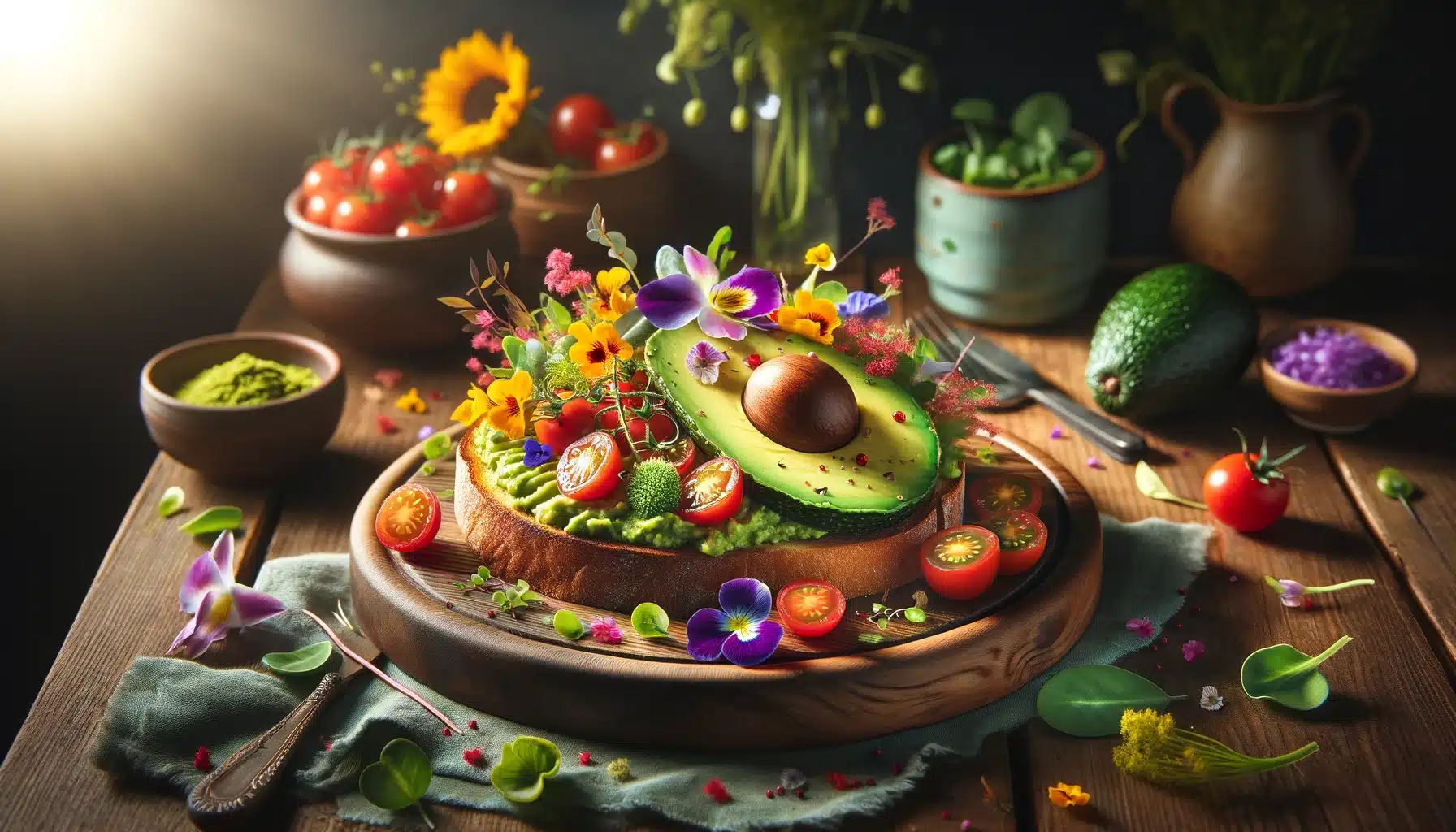
Introduction to How to Do Food Photography
How to do food photography that appeals to your audience? Most food bloggers don’t know this. So, if you want to know how to do food photography, you have come to the right place. Food photography is the art of capturing delicious dishes in a way that makes viewers’ mouths water. Whether you’re a foodie sharing your culinary creations on social media or a professional photographer working for a restaurant, mastering creative food photography tips can take your images from ordinary to extraordinary.
You can also think about your favorite food magazine. Each page is filled with mouthwatering images that make you want to try every recipe. Creative food photography isn’t just about snapping pictures of meals; it’s about storytelling. It’s about conveying the flavors, textures, and emotions associated with each dish through visual imagery. This capturing food images guide will highlight all food photography tips you need to know.
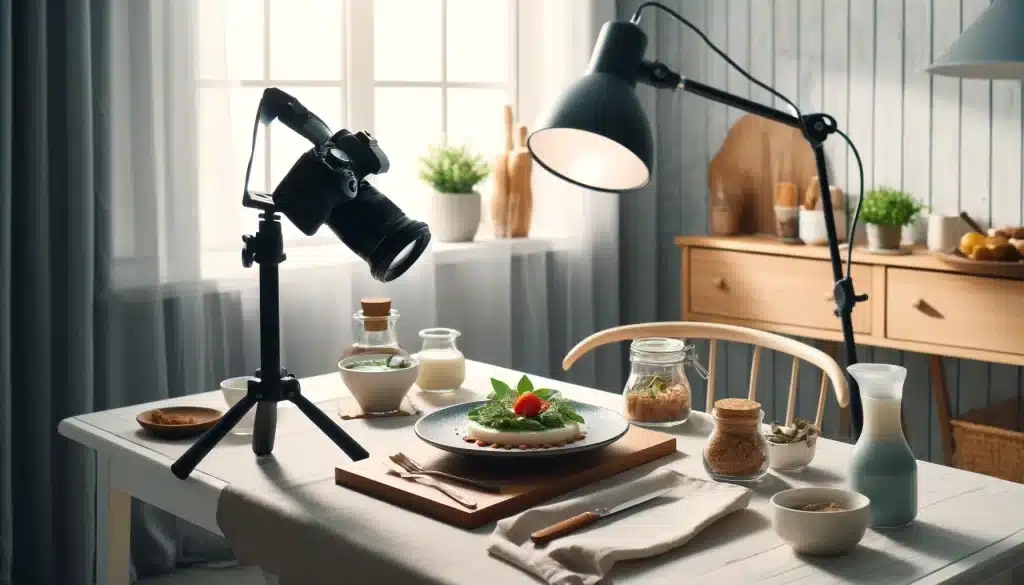
Table of Contents
Importance of Amazing Food Photography
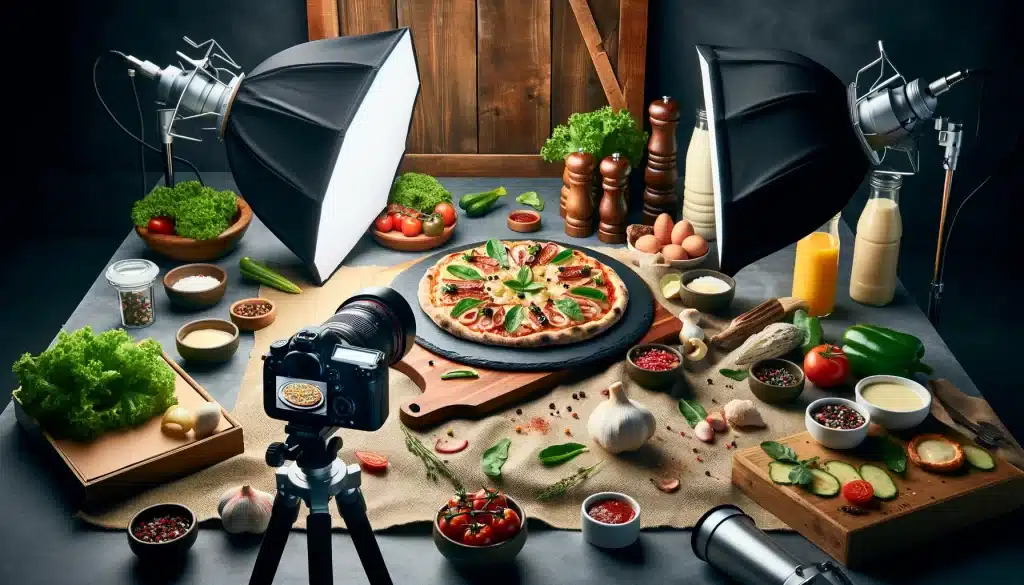
Capturing the essence of delicious dishes through amazing food photography is crucial for several reasons:
Visual Appeal for Perfecting Food Image Capture
High-quality food photos attract viewers with their enticing and appetizing look. For example, a well-photographed pizza with gooey cheese and fresh toppings can make viewers crave a slice instantly. These visually appealing photos not only make food look delicious but also create a desire to experience the dishes.
Marketing Power
Amazing food photos are powerful marketing tools for restaurants, bakeries, and food bloggers. A beautifully captured dessert can drive customers to visit a bakery or order online. These food photography tips serve as a sneak peek into what customers can expect. They entice them to try the food and visit the establishment.
Social Media Buzz
In today’s digital age, stunning food photos create a buzz on social media platforms. A picture-perfect brunch spread can generate likes and shares, increasing engagement with followers. These photos not only showcase delicious food but also encourage social sharing and interaction. And thus they expand the reach and visibility of food businesses.

Brand Identity
Consistent, high-quality food photography establishes a strong brand identity for food businesses. A series of beautifully styled dishes can make a restaurant stand out in a competitive market. These photos convey a sense of professionalism, creativity, and attention to detail, reinforcing the brand’s image and values in the minds of customers.
Culinary Inspiration
Food photography serves as a source of culinary inspiration for home cooks and aspiring chefs. Detailed photos of cooking processes and final presentations can help individuals recreate dishes at home. These photos showcase techniques, ingredients, and plating ideas, inspiring creativity in the kitchen and encouraging culinary exploration.
Cultural Representation
Through amazing food photography, different cuisines and culinary traditions can be celebrated and showcased. A beautifully photographed sushi platter represents Japanese cuisine in an authentic and appealing way. These photos not only highlight the diversity of food but also promote cultural appreciation and understanding.
Table: The Journey of Amazing Food Photography
| Stage | Stage Description |
|---|---|
| Preparation | Gathering ingredients, styling props, and setting up the scene for the perfect shot. |
| Creativity | Experimenting with angles, compositions, and lighting to capture unique and visually appealing images. |
| Execution | Using camera settings, techniques, and editing tools to bring out the best in food photos. |
| Presentation | Showcasing the final images through online platforms, social media, and print media to engage and attract viewers. |
| Feedback | Receiving feedback from viewers, clients, and peers to improve skills, refine techniques, and enhance future food photography projects. |
| Growth & Mastery | Continuously learning, practicing, and evolving as a food photographer to achieve mastery and excellence in capturing culinary delights. |
Pro Tip: Learn what composition photography is as a concept and then these composition rules to expand your knowledge.
How to Do Food Photography for Beginners?
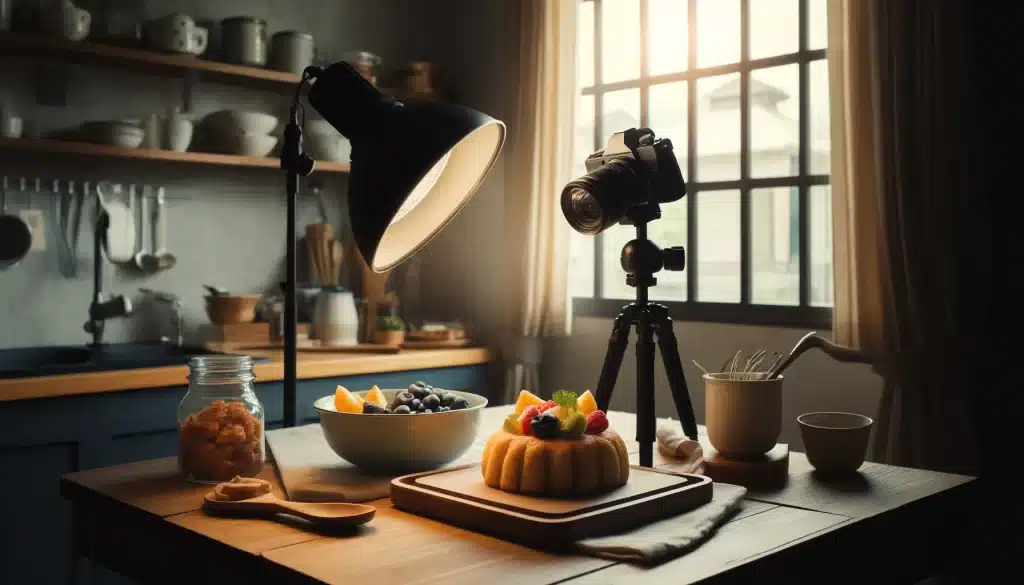
In your journey to mastering food photography as a beginner, here are essential food photography tips in our food photography techniques tutorial.
Understand Your Camera
- One of the basic food photography tips is to familiarize yourself with your camera's settings, including aperture, shutter speed, and ISO, to achieve the desired exposure for your food photos.
- Experiment with different lenses, such as a macro lens, to capture intricate details and create stunning close-up shots.
Natural Lighting for Mastering Food Picture Taking
- Utilize natural light whenever possible as it provides a soft and flattering illumination for food photography.
- Avoid harsh overhead lighting or direct sunlight, which can create unwanted shadows and highlights.
Composition Matters
- Pay attention to the composition of your food photos by using the rule of thirds to create visually appealing images.
- Consider the angles and perspectives from which you shoot, such as overhead shots or eye-level angles, to showcase the food in the best way.
Editing for Enhancement
- Use photo editing software like Adobe Lightroom or Photoshop to enhance your food photos, adjusting colors, contrast, and sharpness as needed.
- Avoid over-editing and aim for a natural look that accurately represents the colors and textures of the food.
Practice and Patience
- Practice regularly and experiment with different food subjects, settings, and techniques to improve your skills.
- Be patient and don't be afraid to make mistakes; learning from each shoot will help you grow as a food photographer
| Equipment | Description |
|---|---|
| DSLR Camera | Allows for manual control and high-quality images |
| Tripod | Provides stability for long exposure and sharp photos |
| Reflectors/Diffusers | Helps control lighting and reduce harsh shadows |
| Backdrops | Adds visual interest and sets the mood for the photo |
| Props and Utensils | Enhances the composition and storytelling of the image |
| Editing Software | Allows for post-processing and refining the final image |
5 Important Creative Food Photography Tips
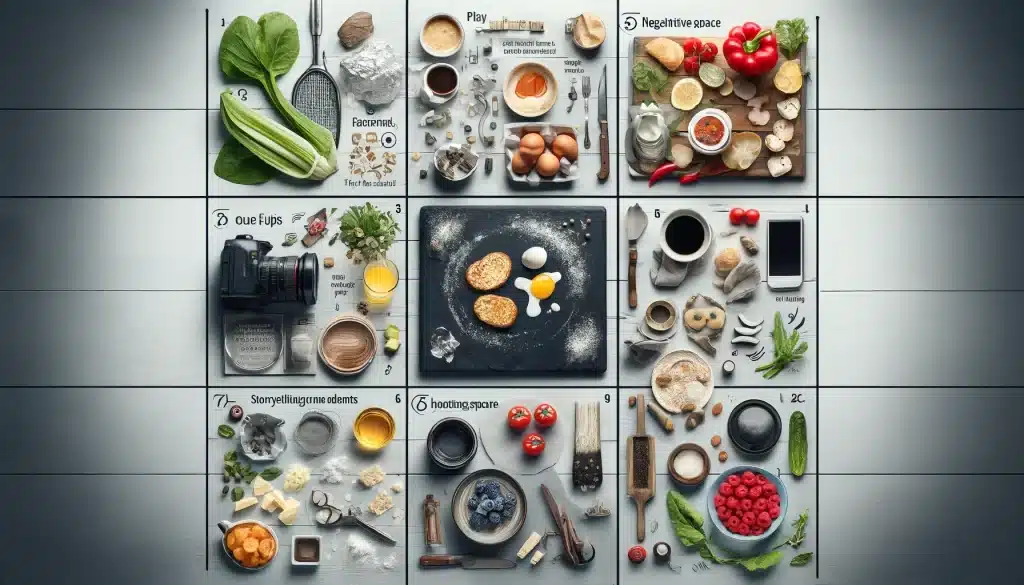
In this section you will learn expert tips for culinary photography and mastering food picture taking in the competitive world. lets get into these food photography tips.
Focus on Freshness
When you’re taking pictures of food, using fresh ingredients can make a big difference. Imagine taking a photo of a salad. If the lettuce looks wilted and sad, it won’t look as tasty as if the lettuce is fresh, crisp, and vibrant. People are more likely to want to eat something that looks fresh and delicious in a picture.
How to Do Food Photography with Different Textures
Textures can add a lot of interest to your food photos. Let’s say you’re taking a picture of a soup. If the soup is smooth and creamy and you pair it with a crusty piece of bread, the contrast in textures makes the photo more appealing. It’s like creating a visual experience that makes people want to taste the food. It is one of the best food photography tips.
Utilize Negative Space for Capturing Food Images
Sometimes, having empty space around your food can actually make it look better in a photo. For example, if you’re photographing a dessert, leaving some space around it can help highlight the dessert’s details and make it look more enticing.
Pro Tip: Learn how to crop in Photoshop to make your editing even easier.

Tell a Story
You can use things like props, utensils, and backgrounds to tell a story with your food photos. For instance, if you’re taking a picture of a cup of coffee, adding a book and glasses nearby can create a cozy atmosphere that makes people imagine themselves enjoying a peaceful moment with a hot drink.
Play with Angles
Changing the angle of your shot can give your photos a different look. Instead of always taking pictures from directly above, try taking them from a slight angle. This can show off the layers and textures of the food in a more interesting way.
Capturing Food Images Guide and Camera Setting
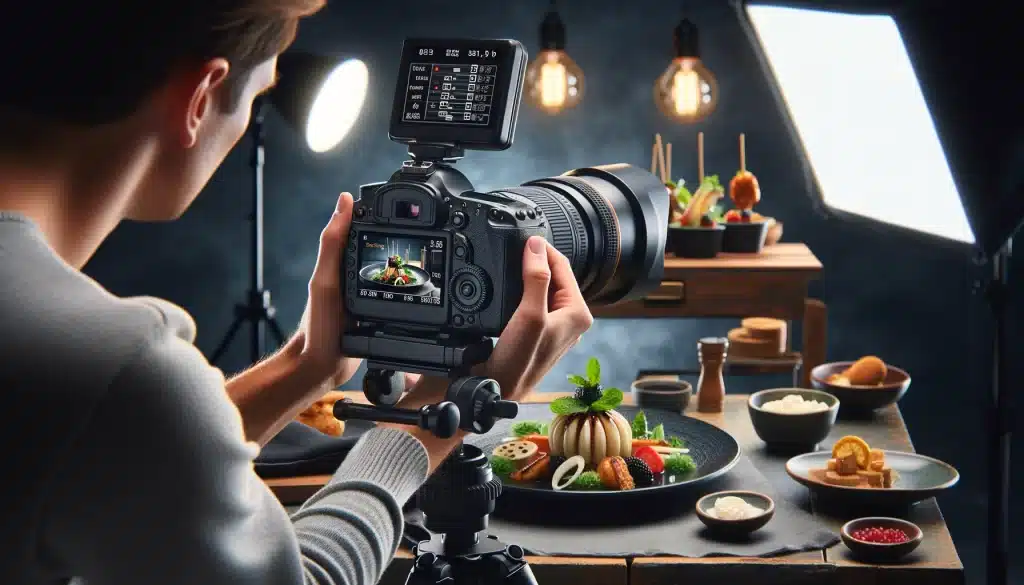
Capturing appetizing food photos relies on understanding and utilizing the correct camera settings. Let’s dive deeper into each setting and how it to make perfecting food image capture.
Aperture: The aperture setting controls the amount of light entering the camera and affects the depth of field in your photos. Using a wider aperture (represented by a lower f-stop number like f/2.8 or f/4) creates a shallow depth of field. This means that the background will be blurred, drawing attention to the main subject, which is your food. Imagine taking a picture of a beautifully plated dessert with a creamy background blur that makes the dessert stand out.
Shutter Speed: Shutter speed determines how long the camera’s sensor is exposed to light. A faster shutter speed is essential for food photography to avoid motion blur. It is especially when shooting handheld or capturing steam or movement in the scene. For example, if you’re photographing a steaming bowl of soup, using a fast shutter speed freezes the steam in action. It adds a dynamic element to your photo.
ISO: ISO measures the camera sensor’s sensitivity to light. Keeping the ISO low (such as ISO 100 or 200) is ideal for maintaining image quality and reducing noise. It is good especially in well-lit conditions. However, in low light situations, you may need to increase the ISO slightly (but avoid going too high to prevent graininess) to ensure proper exposure without sacrificing image clarity.
How to Do Food Photography: Other Useful Settings to Consider
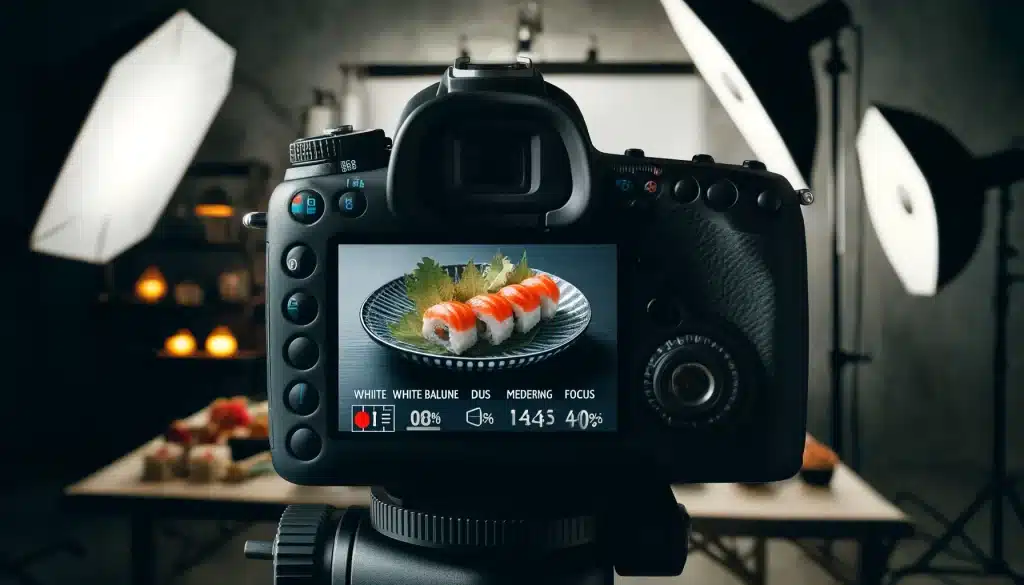
White Balance: White balance settings help adjust the color temperature of your photos to match the lighting conditions. For instance, if you’re shooting under natural daylight, use the daylight white balance setting. It ensures that the colors in your food appear true to life. Similarly, when shooting under artificial light, select the appropriate white balance setting (e.g., tungsten for indoor lighting). It prevents color casts and maintains color accuracy.
Focus: Achieving sharp focus is crucial in creative food photography to showcase the details and textures of the dishes. You can use manual focus to precisely control where the camera focuses. It ensures that the most important part of the food (such as the focal point of a dish) is crisp and clear in the photo. Using a tripod can also help stabilize your camera and maintain sharpness, especially in close-up shots or long exposure situations.
Recommended Camera Settings for Food Photography
| Camera Setting | Recommended Value |
|---|---|
| Aperture | Wide (low f-stop) |
| Shutter Speed | Fast (to avoid blur) |
| ISO | Low (reduce noise) |
| White Balance | Match lighting |
| Focus | Manual or precise |
How to Do Food Photography with Right Equipment
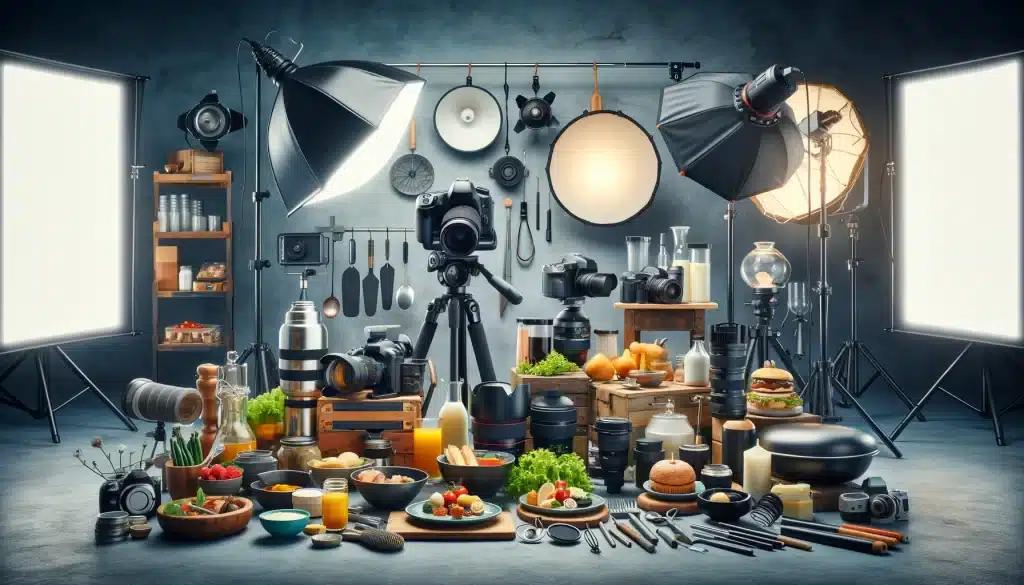
When it comes to capturing stunning food photos that make viewers’ mouths water, having the right equipment can make all the difference. With these equipment, you understand how to do food photography that wins hearts. Let’s explore how to do food photography with the essential gear and tools. Take successful and creative food photography to the next level.
Camera and Lens
A good quality DSLR or mirrorless camera is the backbone of your food photography setup. Look for a camera with manual control options to fine-tune settings like aperture, shutter speed, and ISO. Pair your camera with a versatile lens, such as a prime lens (e.g., 50mm or 35mm) or a macro lens. It is to capture intricate details and achieve beautiful bokeh (background blur) in your photos.
Tripod
A sturdy tripod is essential for achieving sharp and steady shots, especially in low light conditions. It is equally good when using slower shutter speeds. It provides stability and allows you to compose your shots with precision without worrying about camera shake.
Lighting Equipment
While natural light is often preferred for stunning food photography, having additional lighting options can help enhance your photos. Consider investing in softboxes, diffusers, or reflectors to control and manipulate light. They create soft and flattering illumination, and reduce harsh shadows.
Props and Styling Tools
Props such as plates, utensils, napkins, and backgrounds play a crucial role in setting the scene. Moreover, they enhance the visual appeal of your food photos. Choose props that complement the theme and mood you want to convey, whether it’s rustic, modern, or elegant. Tools like tweezers, brushes, and spritz bottles can also help you style and perfect the presentation of your dishes.
Editing Software
Post-processing software like Adobe Lightroom or Photoshop allows you to fine-tune and enhance your food photos using filters. From adjusting colors and contrast to sharpening details and removing distractions, editing software gives you creative control. You can make your images pop and look professional.
Pro Tip: Learn these Lightroom editing tips for an even smoother workflow.
Backdrops and Surfaces
Having a collection of backdrops and surfaces in various textures and colors adds versatility to your creative food photography. Choose backgrounds that complement the colors and textures of your dishes while adding visual interest and depth to your photos.

FAQS – How to Do Food Photography?
How to photograph food for beginners?
To photograph food as a beginner, start by choosing simple and well-lit setups. Natural light works best, so shoot near a window or outdoors if possible. Use a plain background to make the food stand out, and experiment with different angles to find the most appealing composition. Pay attention to details like garnishes and textures, and consider using props to add interest to the scene.
How do you get into food photography?
To get into food photography, start by practicing with the food you have at home. Experiment with styling and lighting to create visually appealing compositions. Invest in basic photography equipment like a camera and tripod if possible, and study the work of professional food photographers for inspiration. Networking with chefs, food bloggers, and other photographers can also help you get started in the industry.
How do you take attractive pictures of food?
To take attractive pictures of food, focus on presentation and styling. Arrange the food neatly on a clean plate or surface, and use complementary colors and textures to make the dish visually appealing. Pay attention to lighting, ensuring that the food is well-lit and free from harsh shadows. Experiment with different angles and perspectives to find the most flattering view of the food.
How do I set up food photography at home?
To set up food photography at home, start by finding a well-lit area near a window or using artificial lights if necessary. Choose a clean and simple background, such as a wooden table or marble countertop, to showcase the food. Gather basic props like utensils, napkins, and garnishes to enhance the composition. Experiment with different setups and angles until you find a style that works for you, and don’t be afraid to get creative with your arrangements.
What are some essential food photography tips for beginners?
As a beginner, it’s crucial to take the time to learn about your camera settings. Know how they work together to capture stunning food photos. Experiment with different angles and framing techniques to set the scene for your dishes. Don’t be afraid to get creative and think outside the frame to enhance your skills.
How can I set up a food photography shoot for optimal results?
Setting up for a creative food photography shoot requires attention to detail and planning. Take the time to carefully arrange your props and utensils to create a cohesive and visually appealing scene. Remember to work with natural light whenever possible and use reflectors to fill in shadows for a well-balanced photograph.
What are some time-saving tips for editing food photos?
When editing your food photos, it’s important to work efficiently while maintaining quality. Utilize presets and batch processing to save time and streamline your workflow. Learn how to use editing software like Photoshop and Lightroom effectively to achieve the desired look for your images without spending hours in front of the computer.
How can I learn to frame food photos creatively?
Learning to frame food photos creatively is about exploring different compositions and perspectives. Experiment with overhead shots, close-ups, and unique angles to add interest to your photos. Take the time to study composition techniques and apply them to your photography to create captivating frames.
Conclusion
We have articulated everything you should know about how to do food photography. Mastering the art of food photography requires right equipment and techniques. Moreover, it requires a passion for storytelling through visuals. As an avid food photographer myself, I’ve experienced firsthand how the right camera settings, creative lighting, and thoughtful composition can transform a simple dish into a captivating image that resonates with viewers. By continuously honing your skills, experimenting with new ideas, and learning from experienced photographers, you can take your food photography to the next level.
If you want to know how to do food photography I highly recommend checking out our comprehensive courses on Photoshop and Lightroom. These courses are designed to provide you with in-depth knowledge, practical techniques, and hands-on experience to elevate your photography game. Don’t miss this opportunity to unlock your creative potential and know how to do food photography.
Take a step towards becoming a master in food photography by enrolling in our courses:
Start your journey to capturing stunning food photos today!
Have a nice photoshoot!
Learn more about
- Culinary Photography Techniques
- Editing Food Images
- Food Photography Tips
- Food Styling Ideas
- Lighting for Food Photos
Course
Light Effect Photoshop
Lightroom Course 2025
Adobe Photoshop Course 2025
Photo Editing Course


Download Your Free Guide Now!
Discover the secrets of photography with our printable guide! Master essential techniques like aperture, shutter speed, and ISO to create stunning images. Get your free printable PDF now and start turning your snapshots into masterpieces!


